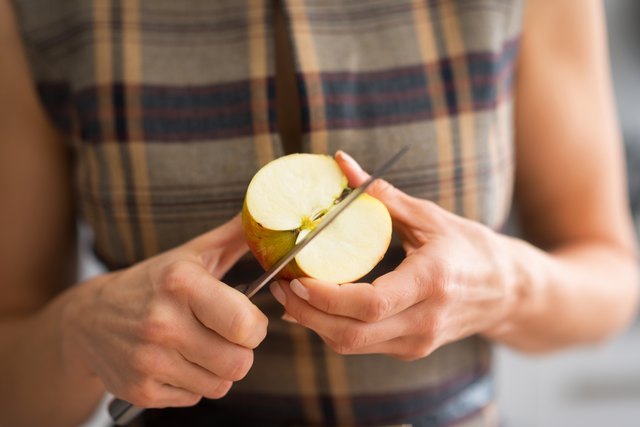
Overview
Take a look around any book store, and you'll find dozens of diet books lining the shelves. Despite their bright and cheerful covers, with their positive, upbeat claims, many of them are filled with information that promotes all the wrong messages.
"The word 'diet' is negative and implies people can go on and off them," said Jane Korsberg, a senior instructor in the department of nutrition at Case Western Reserve University in Cleveland.
Korsberg is one nutritionist who thinks it would be better to re-think the whole concept of dieting.
"'Diet foods' are confusing to many people," she explained. "What diet is the 'diet food' geared for? Is it low-calorie, low-fat, low-sodium, low-sugar, gluten-free, et cetera?"
Besides, many of the foods that specifically target dieters seem to rarely satisfy. Take those 100-calorie snack packs, for example, made to help people control calories. Those often don't even work, Korsberg says. After all, few people actually stop at only one pack.
You don't need fancy plans or complicated point systems to be thin. All you need to do is make smart food choices, watch your portion sizes and stay active.
"Learning to eat properly for a lifetime is more beneficial," Korsberg said. "The emphasis should be on choosing healthful foods every day and changing lifestyles for the better."
So instead of sticking to diet fare, fill up on nutritious, wholesome foods. And if you need some recommendations, you can start with these five options, which are among the many delicious foods that make a good addition to healthy eating while keeping you slender.
The word 'diet' is negative and implies people can go on and off them.
- Dietitian Jane Korsberg, senior instructor in the department of nutrition, Case Western Reserve University
The Drink to Stay Slim: Green Tea
Skip the diet soft drinks. They typically contain artificial sweeteners that might not be good for your waistline. While these faux sugars contain very few calories -- if they contain any at all. Jane Korsberg, a senior instructor in the department of nutrition at Case Western Reserve University in Cleveland cautions that dirt soft drinks just might make people crave more of the sweet stuff later on, leading to poor food choices.
Instead of picking a drink that you hope won't lead to weight gain, choose one that might actually help you lose weight, such as green tea.
A study in the "Journal of the American College of Nutrition" found that people who drank four cups of this brew each day for eight weeks lowered their BMI levels and lost an average of about 2 lb. by the end of the study. Another study, published in the journal "Obesity," found that people who drank two servings of a green tea brew for three months lost weight around their waistlines.
Just make sure you stick to the homemade brew. It typically contains more heart-healthy amounts of antioxidants than the bottled varieties.
1. Apples
Apples are a good source of dietary fiber. Dietary fiber not only contributes to a healthy digestive system and reduced cholesterol, but it also benefits smart eaters by yielding no calories while keeping them satisfied.
And there's something else about the fruit that might help you feel full. A study in the journal "Appetite" found that when women added either three apples or three pears to their daily meals, they lost more weight than people who added three oat cookies to their diets -- even though the fruit and the cookies contained the exact same amount of dietary fiber.
Although the reason behind this finding may be a mystery, there is something to be said for the findings. According to Alan Aragon, a nutritionist and author of "Girth Control: The Science of Fat Loss & Muscle Gain," crunchy foods in particular can trick a person into feeling fuller. The act of chewing may send satiety signals to your body, he says, making you think you've eaten more than you really have and keeping hunger at bay.
2. Almonds
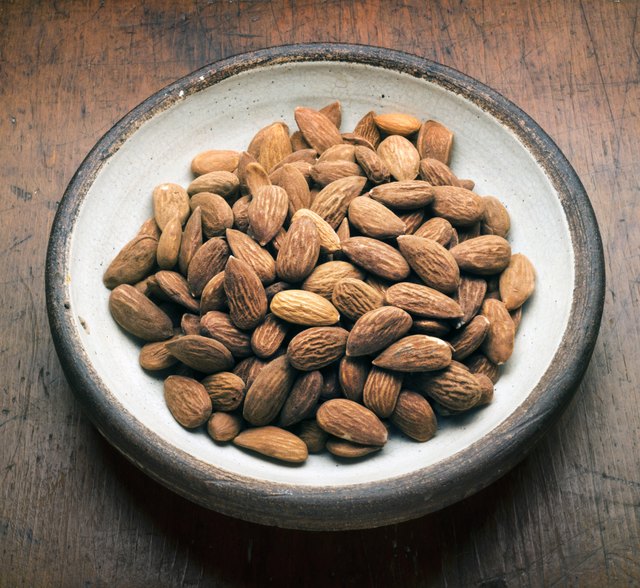
If you're looking for a tasty midday snack, a handful of almonds are a well-regarded option.
A study in 2009 in "The American Journal of Clinical Nutrition" found that women who ate nuts at least two times a week were more successful at keeping weight off than those who didn't eat this food.
Almonds are a particular favorite among some nutritionists, says Aragon.
One ounce of almonds contains only 167 calories, plus it packs roughly 6 g of protein and 3 g of fiber, both nutrients that can make you feel full.
Furthermore, like apples, almonds are crunchy and require a lot of chewing, so they, too, can make you feel like you've eaten more than you actually did and keep you fuller longer.
3. Salmon
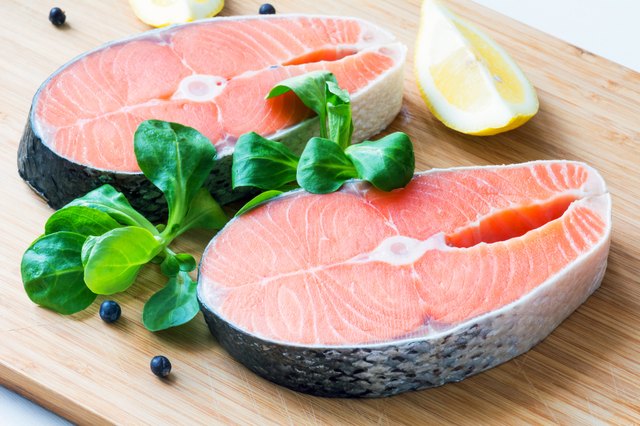
There's some evidence that the fat in foods such as salmon can boost satiety levels.
For example, a study published in the "International Journal of Obesity" found that when dieters ate salmon a few times a week, they lost about two more pounds than those who didn't include seafood in their meals.
Salmon is relatively low in calories. One 3-oz. serving has just 175 calories. Salmon is a great source of protein as well.
4. Eggs
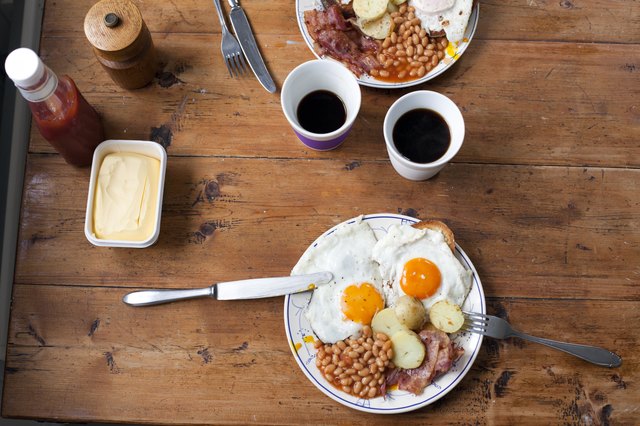
There's no doubt that protein, like fiber, has impressive satiating powers. And while eggs seem to (finally!) be kicking the bad reputation they had in some circles, there can be no contesting their ability to help keep your weight in check.
Research has shown that eating eggs at breakfast can help you fight weight gain all day long. A study reported in 2008 in the "International Journal of Obesity" found that when dieters ate two eggs for breakfast for five days out of the week, they lost 65 percent more weight than dieters who consumed a bagel in the morning.
Although protein is likely to fill you up whenever you eat it, some scientists suspect that having more in the morning can keep you feeling fuller all day long.
5. Tomatoes
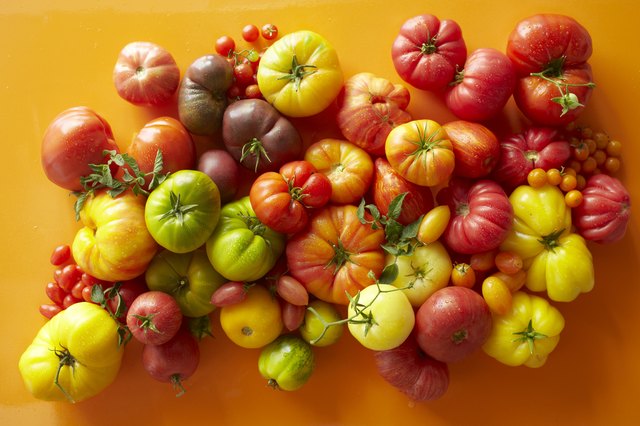
It's true that most veggies make for great diet fare. Non-starchy vegetables in particular, such as carrots, celery and spinach, are filled with fiber. Like other foods high in fiber, they can help keep you feeling satiated.
Plus, they're pretty self-regulating, says Aragon. You can't really overeat with nonstarchy vegetables. After all, how many baby carrots can a person eat without needing to dunk them in some ranch dressing?
So while there are many veggies that can help you stay slim, tomatoes might be a particularly good option because they're so tasty. And, besides, with that whole a-tomato-is-a-vegetable-no-it's-a-fruit argument, you might have forgotten all about eating them. One cup of cooked, red tomatoes contains just 43 calories, but tastes just as delicious as any number of high-calorie foods.
And that's at least half the secret, finding foods that are both healthy and tasty. The good thing is, they do exist. Over time, you'll discover what wholesome, filling foods you prefer, expanding your choices while shrinking your waistline.
www.livestrong.com





No comments:
Post a Comment